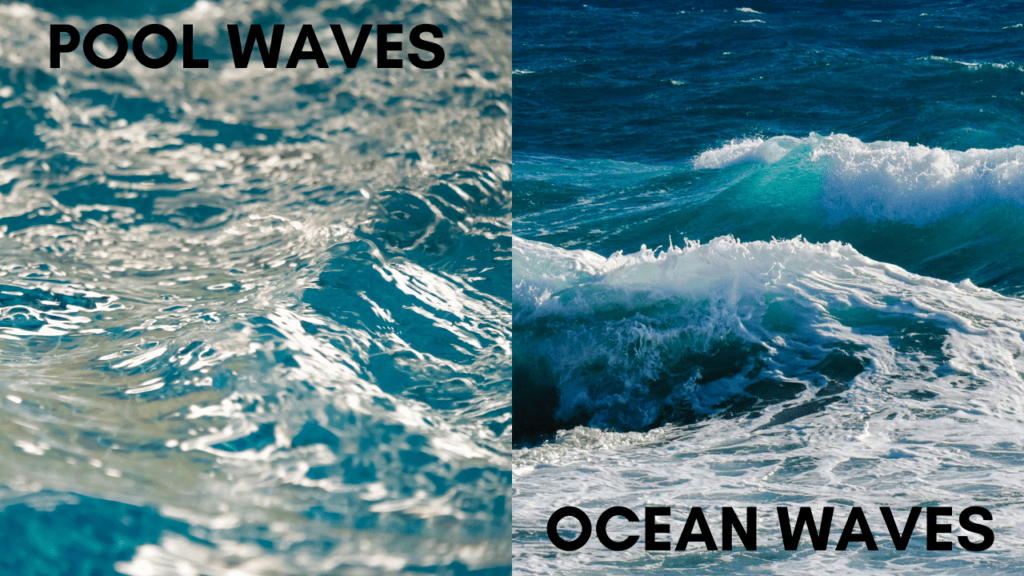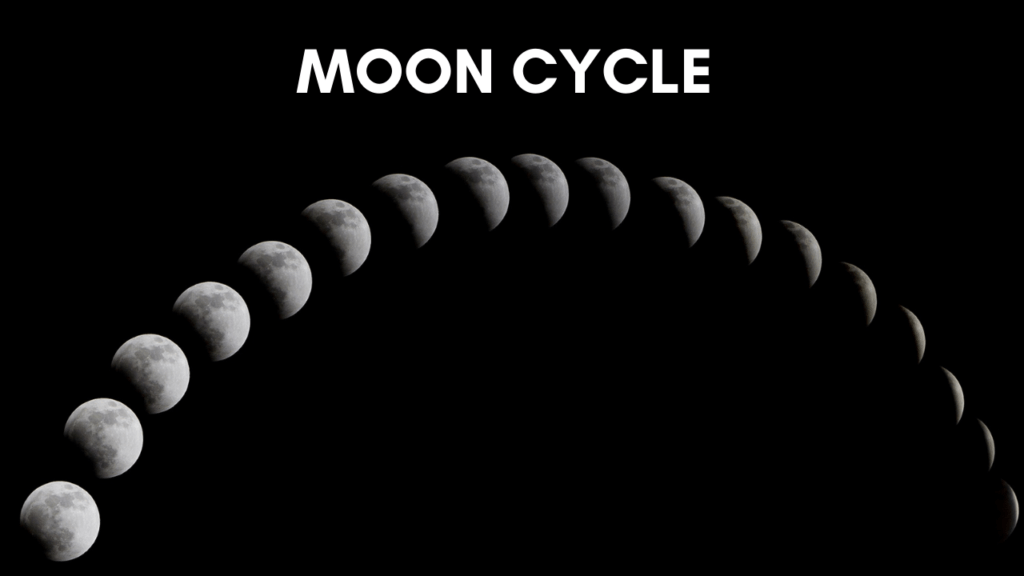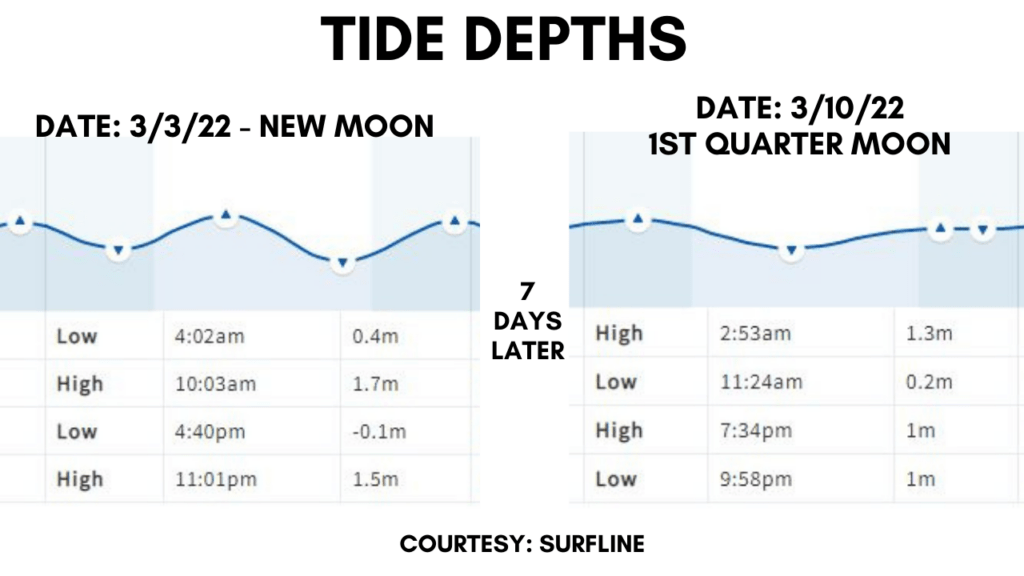What’s The Difference Between Waves and Tides?
Wes Severson March 2nd, 2022 Posted In: Articles
What’s The Difference Between Waves & Tides?
Tides and waves are totally different even though they can be often be conceptualized as being one and the same. They both play a huge role in the ebb and flow of the ocean every single day. To fully understand the differences that define waves vs. tides and their impact on beaches across the world, it is best to start laying out some clear hallmarks of the two terms.
You hear surfers all the time using the two terms synergistically. That is because one of the main differences between tides and waves is that tides have a huge impact on waves. That is the main reason surfers pay such close attention to tides. On the other hand, waves have no impact on tides.
Quick Differences
Let’s start by laying out the quickest difference between waves and tides so you can really get a feel for their relationship. Tides are the rise and fall of water levels in the ocean due to gravitational pulls. Waves are a series of crests and troughs in the water that are formed due to the impact of wind or other forces.
Another easily definable difference between waves and tides is that waves occur on every body of water, not just the ocean. You see small waves on lakes, in swimming pools, in bathtubs, etc. Conversely, tides ONLY happen in the ocean.

Going Deeper into Tides
Tides represent the rise and fall of ocean water levels which are caused by the sun and the moon and their powerful gravitational pull on the earth. The moon has a bigger impact on tides because it is closer to earth than the sun. Tides are one of the most reliable forces on planet earth. Even though the level of water they produce is constantly changing. That’s because of the consistency of moon cycles.
High & Low Tide Overview
A tide cycle generally occurs every 25 hours or so. Most coastal regions experience two high tides and two low tides per day. There are a few other areas on earth where only one high and low tide occurs each day, but they are pretty rare. During a high tide, the water levels rise and during a low tide, the water level recedes. Depending on where the moon is, these rises and falls can be very dramatic or hardly noticeable.
When we are in a period of a new moon or full moon, the rise and fall of water levels get bigger and become easily observable. A new moon and full moon generally occur every 14 days. On the other hand, 7 days after a full or new moon, when we are in a first quarter or last quarter moon phase, the rise and fall of the water levels become much less prevalent.


How Waves Are Formed
To provide even more clarity into the difference between tides and waves we must properly describe how waves are formed. Wind has the power to push water into hills of high pressure which are known as crests. This is the peak height of the wave. Thanks to Newton’s third law, (For every action, there is an equal and opposite reaction) when a crest is formed, it leaves behind a dip or valley of low pressure that is often called the trough or valley of a wave.
Waves are not only measured by their heights and low points. They are also measured by the distances between subsequent crests. This measurement is known as wavelength which allows us to gather our next measurement; Wave period. A wave period is how long it takes for a wave to travel the wavelength. Finally, wave frequency is measured by the number of wave crests that pass by a fixed location like a buoy, over a specific period of time. All these measurements combined are what give us our surf forecasts. And they let us know whether the waves will be good for surfers or not.
Reliability of Tides vs. Waves
That spells out another difference between tides and waves. While tides change but are generally consistent, waves are also constantly changing but they are not reliable. Waves are totally dependent on winds blowing hundreds or thousands of miles away. They create varying sizes of crests and valleys.
For instance, during the summer in Northern California, weeks can go by without decent waves to surf. That’s because there are fewer storms brewing winds in the Northern Hemisphere. When winter comes, and storms are more prevalent in the Northern Hemisphere, waves become much more consistent. In contrast, tides don’t depend on seasons, they depend mostly on moon cycles which are very consistent.
Impact on Waves
To really grasp the difference between waves and tides, it can help to understand the impact the tide has on waves in the ocean. The relationship is pretty complicated. Generally speaking, many surfers believe that the best time to paddle out is in between tides when the tide is rising. However, each surf spot has different features on the ocean floor. This makes the waves respond differently depending on how deep and shallow the water is. There are surf locations that get their best, most surfable waves during low tide. And there are others that strive during high tide.
High Tide vs. Low Tide Risks
Surfing during low tide can often be much riskier for several reasons. One reason is that the lower water levels can often expose rocks that don’t tend to mix well with your surfboard or your body. During high tide, many of the rocks become submerged enough that they will not be an obstacle you need to dodge.
Even when you are surfing at a beach with no rocks, the water will be much shallower during low tide. Which makes it easier for you to hit the bottom during a wipeout or break your board when it hits the sand. That same risk can also happen during high tide because in many areas waves end up breaking further up on the shore where the water is shallower creating what is known as shore break. That can sometimes lead to waves breaking right onto the sand which makes them very precarious to surf.
Staying On Top of It
That pretty much sums up the difference between waves and tides. If you want to know how the tides impact the waves at your local surf spot you should ask. Go to your local surf shop or ask a surfer in the parking lot whether the area is better at high tide or low tide. Most surfers will be eager to offer their opinion. And they’ll tell you if there are risks associated with the tides at any particular time.
Also, to get a good handle on the timing of the tides and how they impact the waves, you can subscribe to surf forecast services like Surfline where the forecasters are familiar with multiple locations and have direct knowledge on when the best times are to paddle out.

